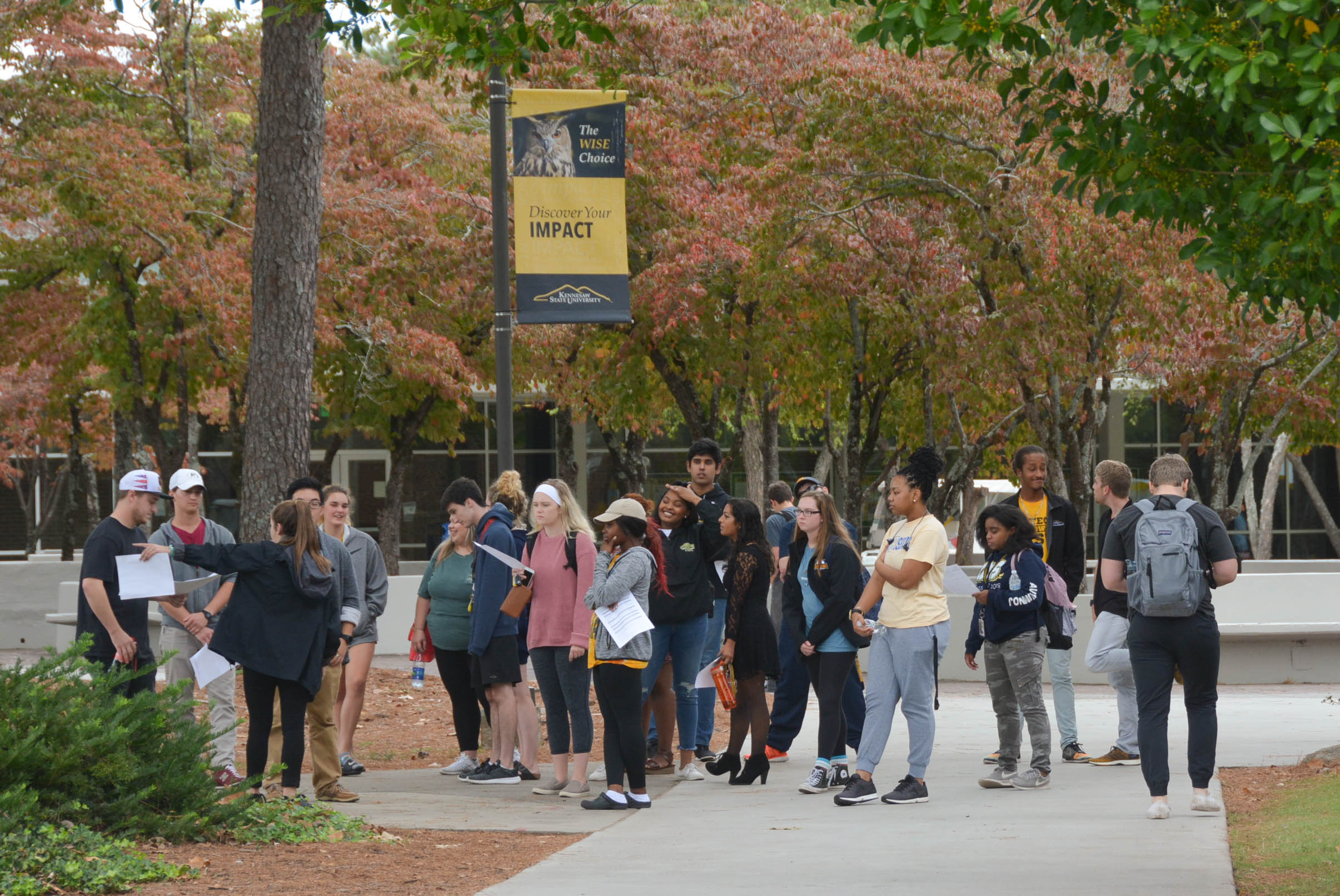The Center for Young Adult Addiction and Recovery will host training sessions throughout the semester to teach students how to administer naloxone, a medication that reverses the effects of an opioid overdose.
The training sessions — taught by peer education coordinator and trainer for the CYAAR Lindsay Montgomery — give students the opportunity to learn how to spot the warning signs of an opioid overdose, what steps to take when they see someone who might be suffering from an overdose, how Georgia’s medical amnesty law works, what naloxone is and how to administer it.
“College-aged young adults are one of the demographic groups most heavily affected by the opioid crisis,” Montgomery said. “By training and equipping our students with naloxone, we are preparing them for any situations that may arise in their peer groups or with acquaintances.”
While naloxone is often referred to as an antidote, Montgomery stressed that because the drug is temporary, people must always call authorities first when someone is suffering from an overdose. The effects of naloxone only last 30-90 minutes, so even if a person receives the drug, he or she will still need medical attention.
“Kennesaw State University Police and Public Safety are trained and equipped with naloxone kits,” Montgomery said. “In the event of a suspected overdose on campus, 911 or Kennesaw State’s emergency line should be called first. RAs are also equipped with naloxone kits in the dorms.”
The CYAAR has trained faculty and staff members in how to use naloxone over the years, and about three years ago, KSU police became the first university police department in Georgia to start carrying naloxone with them on campus.
According to Georgia Overdose Prevention, only two other Georgia college police departments carry naloxone — the University of North Georgia and The University of Georgia.
After the most recent training session on Oct. 4, Montgomery provided students with a certification card and a pocket-sized naloxone kit containing a pair of gloves, a nasal spray with two readily available doses of naloxone, a list of the seven steps to take in the event of an overdose and a card with Montgomery’s contact information.
The Center receives the naloxone at an affordable cost, making it easy for them to provide free kits to students that want them.
Opioid addiction has continually risen in the United States and Georgia in recent years. The number of deaths in the U.S. from overdoses involving opioids, including prescription pain pills, heroin and synthetic opioids such as fentanyl, has more than quadrupled between 1999 to 2015, according to the Center for Disease Control and Prevention.
Opioid overdoses also accounted for around 63 percent of the 33,091 drug overdose deaths in the U.S. in 2015.
Teresa Johnston, the executive director of the CYAAR, stressed that Georgia is among the top-11 states with the most prescription opioid overdoses. Although the number of KSU students that have sought help for opioid addiction is low, the number of students in recovery from an opioid addiction has grown substantially, she said.
The center will hold training sessions on both the Kennesaw and Marietta campuses through Dec. 5 to give any student who wants to learn how to administer naloxone and have a kit the chance to come.
“It is important to remember that the primary function of naloxone is to save a life,” Montgomery said. “Whether the person at risk has an opioid dependence or is a first-time user, loss of life is simply unacceptable. If we can prevent an overdose death, we can provide an opportunity for recovery.”


